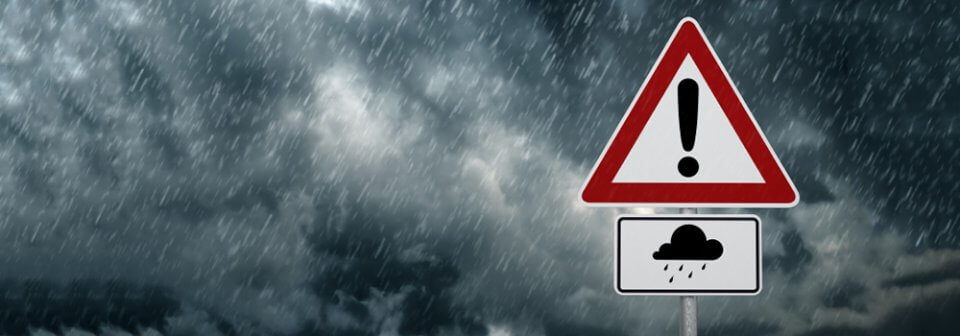
Record-setting rains are pounding Texas, tornadoes are rolling through the Midwest, and other major weather events are sweeping the country. And, while some people may be scratching their heads wondering what’s going on? – many more are realizing that, in spite of homeowners insurance, it’s meant huge unanticipated expenses.
The slew of storms and subsequent ones, whether wind or rain related, are not only likely to cause extensive destruction to property, but they’re also certain to bring sad stories to the surface from homeowners discovering that their insurance policies didn’t cover them for as much of the damage as they had expected.
So before the next big one hits, why not spend a few minutes to review your homeowners policy to make sure you can take Mother Nature head-on by knowing that you’re adequately protected? You may not be able to escape her wrath, but you can repair or rebuild more easily if you have the proper coverage.
By reading though your homeowners insurance policy, you’ll see whether you’re making any of these four mistakes that could prove costly should you not take the appropriate steps to fix them.
Mistake No. 1: Underinsuring your house
According to insurance experts, failing to have enough insurance to cover the cost of rebuilding your house, if it’s destroyed in a storm, is the biggest mistake homeowners make. Though recent data was not available, one 2009 study found that two-thirds of U.S. homes are underinsured.
One of the main reasons for this is that many homeowners buy only enough insurance to cover the amount of their mortgage. But, depending on the initial down payment, the mortgage may be, at most, 80 or 90 percent of the value of the house, if the home has appreciated over the years.
Another reason is some policyholders insure an amount equal to the current value of their homes. Unfortunately, that figure may be far less than the actual cost of rebuilding the house, including labor and supplies. Keep in mind that both could rise sharply after a storm when there’s bigger demand and short supply.
If you aren’t sure how to go about getting a value – check with your insurer as some offer the service for free. Otherwise, you could ask a local real-estate agent, builder, contractor or building association for the average rebuilding cost per square foot in your area. But, when using an outside source, you may have to pay for the estimate.
You may also want to consult your insurer about buying extra coverage, known as floaters or riders, for jewelry, electronics or art – since policies ordinarily limit protection for valuables.
Mistake No. 2: Assuming you have flood insurance
Not part of a standard homeowners contract, if you live near a lake, river, flood plain or the ocean, you should definitely consider buying it. In certain places, you may be required to have flood insurance in order to get a mortgage. The good news here is flood insurance isn’t hard to get because it’s a federal program that accepts everybody who wants the coverage.
Coastal homes aren’t always the only ones that need flood insurance. A perfect example of this was the serious damage incurred in Hurricane Sandy by inland areas, such as parts of New Jersey, Albany, New York and even Vermont – not to mention what’s been going on in Texas. If you find your home is at risk, ask your insurance company if it will sell you flood insurance.
Mistake No. 3: Assuming you have a single, flat deductible
Don’t assume your maximum out-of-pocket cost would be $500, $1,000 or whatever deductible amount you agreed to when you bought your policy.
In the matter of named storms, like hurricanes or major weather events, such as windstorms and earthquakes, the deductible often becomes a percentage of your coverage. In other words, it could end up being 1 to 5 percent of the insured value for a flood or as much as 10 to 15 percent of coverage for an earthquake.
So, if your house is insured for $300,000, but you sustain damage in a windstorm or tornado, you could be stuck with a $15,000 deductible when you file your claim. You can ask your agent or insurer if your policy has different deductibles, depending on the cause of damage. By making a quick call you’ll know if you need to change your policy to one that has the same flat-rate deductible no matter what happens. Be aware this may be hard to find depending on where you live – and will be more expensive.
Mistake No. 4: Believing your policy covers you for mold or sewage backup
Homeowners insurance policies often don’t offer this protection or have claim limits. Check with your insurer to see if this coverage is included in your policy. Sewage backup coverage is fairly inexpensive, but mold insurance can run a great deal more – if you can find it.
And, the reason is a mold problem can occur in many homes, especially if you live in a humid area or your house is old and was built without mold-resistant materials. Despite the high cost, mold coverage could be a worthwhile purchase since the cost of removal could result in a substantial expense.
Don’t let Mother Nature have the upper hand. Make sure you have the homeowners insurance coverage that best protects your home and its contents. Why not get a free homeowners insurance quote today?
Freeway Insurance will provide you with a free, no-obligation quote. Call (800) 777-5620 to speak with a live agent to discuss your insurance needs and get a quote that meets your needs.



